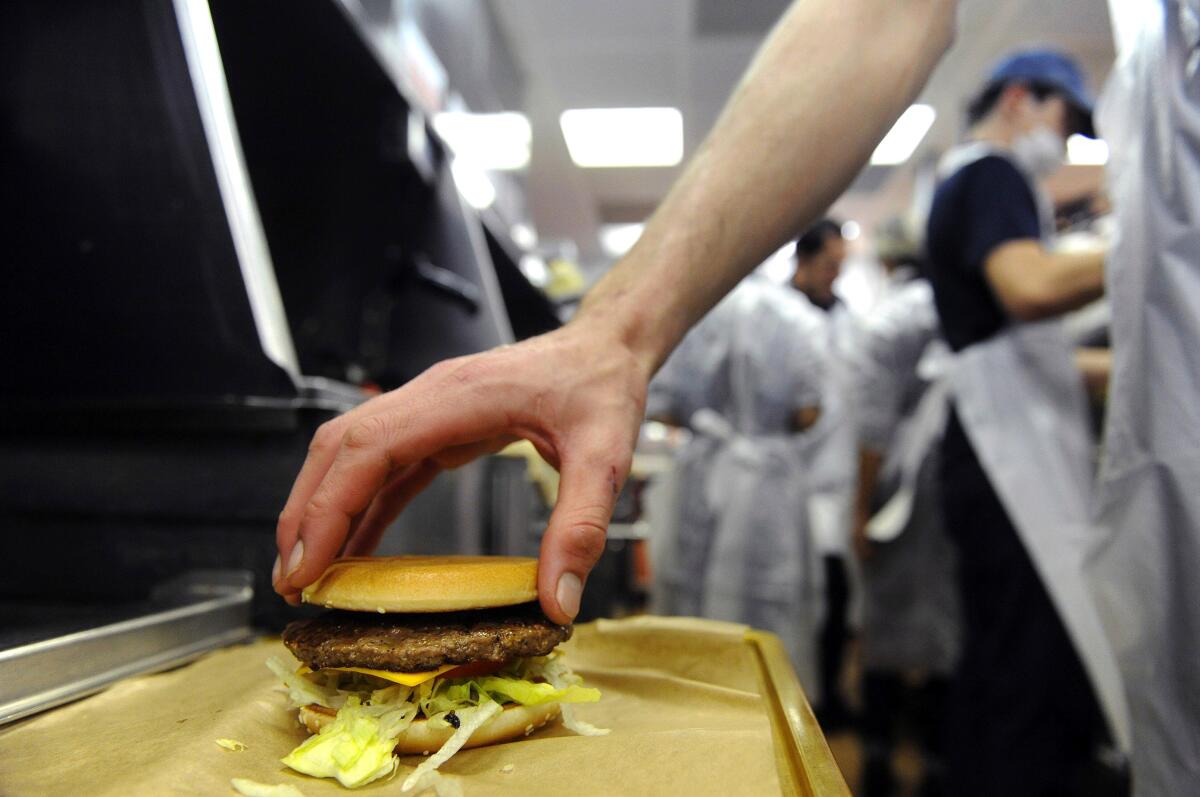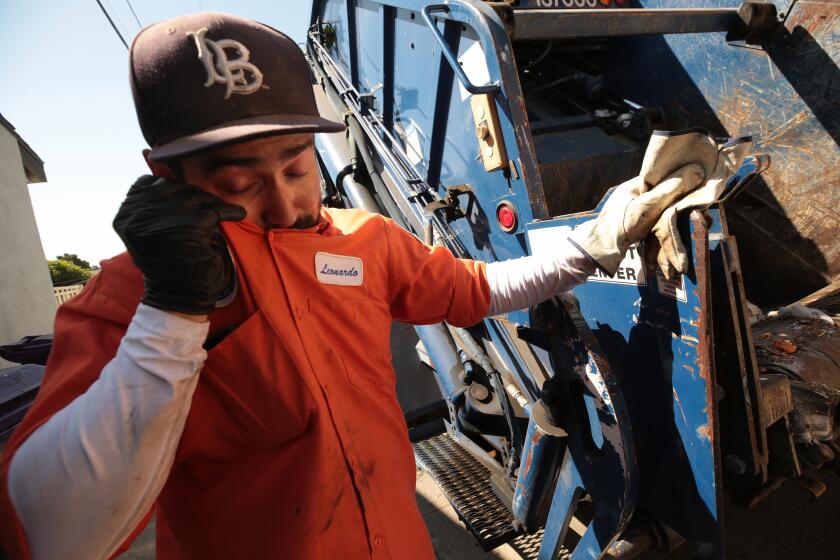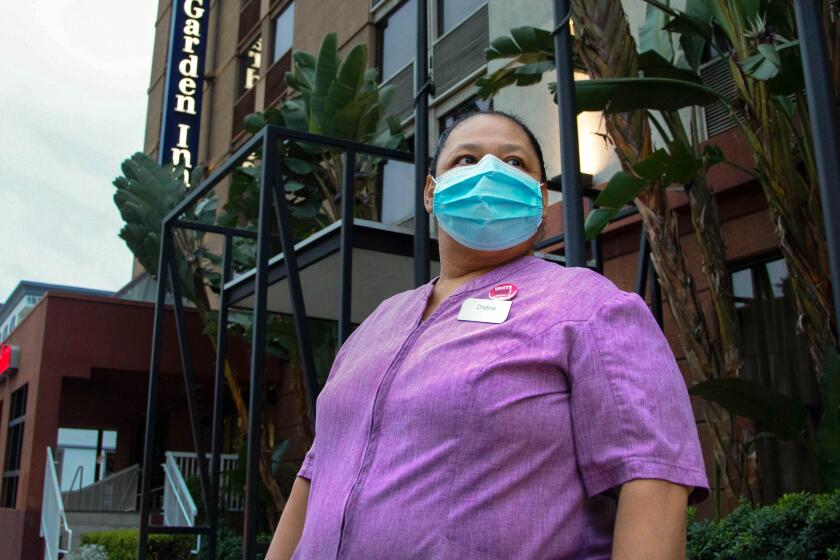Worried about the economy? Demand for these jobs is high and growing

Elsa Reaza was ready to leave her job when a friend suggested she apply for a housekeeping position at the Conrad, a new luxury hotel in downtown Los Angeles.
Reaza worked at a senior home, feeding, taking blood samples and cleaning up after patients. The work was emotionally draining even before the pandemic arrived, taking the lives of residents with whom she’d grown close.
Reaza’s new job as a housekeeper pays about the same but offers better benefits — free bus passes and occasional meals — with a lot more opportunity to advance in the company. “I’m hoping to stay here for a while,” she said.
The COVID-19 pandemic pushed many Americans out of their jobs and forced others — such as Reaza — to rethink theirs. Some participated in a wave of job-leaving dubbed the Great Resignation; others sought improved work-life balance through what they called “quiet quitting.”
Now, with inflation on everyone’s mind and many economists forecasting some degree of recession in the near future, locking into the best job to ride out the economic uncertainty may seem more appealing.
“It’s an unusual job environment with the economy under pressure, with higher interest rates and higher inflation and with a tight labor market,” said Nancy Vanden Houten, lead U.S. economist with Oxford Economics.
With California’s unemployment rate at its lowest point in more than two decades, workers are in short supply all over the economy, but that could change fast if aggressive interest rate hikes by the Federal Reserve depress business investment and hiring. Based on state employment studies and interviews with economists and academics, here are the jobs expected to be in highest demand over the next year in California — arranged roughly from lower skill/pay to higher skill/pay — and some of the pros and cons involved.
- Leisure and hospitality workers: This category includes cashiers and staffers at hotels, restaurants and theme parks. In California, leisure and hospitality had the largest job loss of any sector in the early pandemic: 990,200 jobs vanished from February to April 2020, or 1 out of every 3, according to the state Employment Development Department. Although the sector has recovered about 85% of those lost jobs, the state still expects leisure and hospitality to be the biggest creator of jobs over the next year.
The drawbacks: Demand can be seasonal and the median annual wages are about $32,000 — a level many workers find insufficient to afford housing and transportation in Los Angeles. Union leaders such as Kurt Petersen, co-president of Unite Here Local 11, which represents 32,000 hotel, restaurant, airport and sports arenas in Southern California, are trying to boost that by organizing workers. “I’m optimistic that these jobs can sustain a family,” he said. “I think it will take a lot of work.”
As Angelenos sweat through extreme temperatures, workers are doing whatever they can to cool off, from drinking two gallons of water to wearing ice packs and a fan.
- Fast-food workers: Because we love to eat on the run, the demand for fast-food cooks and counter workers continues to grow, with the EDD forecasting 243,000 openings being filled between 2021 and 2023.
The drawbacks: The industry has a notoriously high turnover rate, which partly explains why there are so many openings. These are often minimum-wage jobs — paying a median annual salary of $32,000. Gov. Gavin Newsom signed legislation on Labor Day to create a panel of appointees empowered to set minimum standards for wages, hours and working conditions for fast-food workers in California. But opponents filed for a referendum, seeking to block it until the matter can be put before voters.

Home healthcare and personal care aides: With baby boomers reaching retirement age and beyond, experts predict a surge in the number of Americans entering nursing homes or needing personal care aides. By 2030, all baby boomers will be 65 or older, a trend some are calling the “silver tsunami.” The EDD projects more than 200,000 home healthcare and personal care aides are needed in California between 2021 and 2023. “The labor market is dynamic and it adapts to these demographic changes,” said Ratika Narag, an associate professor of economics at USC.
The drawbacks: The job can be emotionally draining and the median annual wages are less than $32,000. Patricia Santana, 53, became a personal care aide to care for her husband, who lost his sight and had both feet amputated because of diabetes several years ago. “This work is very difficult,” she said, noting that it pays slightly above minimum wage. “You can work at McDonald’s and get paid the same but we are saving lives.”With COVID protocols keeping them out of rooms before checkout, hotel housekeepers say they are discovering scenes that are filthier and potentially more hazardous than anything they can remember.
Warehouse workers: The continuing growth of e-commerce is putting pressure on warehouse operators to ship more orders. Warehouse construction has surged in the Inland Empire, among other areas of the state. The annual wages for warehouse workers ranges from $33,000 to $48,000, depending on duties and position. The number of transportation and warehouse jobs in the Inland Empire has jumped nearly 40% since February 2020, according to a study by the UC Riverside School of Business. “Those jobs can provide a path to raise a family and buy a house,” said Robert C. Lapsley, president of the California Business Roundtable. “They are critically important to California’s future.”
The drawbacks: The pace of work in warehouse jobs can be unrelenting, which is why California adopted a law last year requiring warehouse employers such as Amazon to disclose productivity quotas for workers.The e-commerce boom has meant a surge in demand for truckers and other logistics workers.(Los Angeles Times)Truck drivers and heavy machine operators: The e-commerce boom has also meant a surge in demand for truckers and other logistics workers. More than 14,000 job ads for truck drivers and heavy machine operators were posted in the 60 days leading up to Aug. 7, according to the EDD. Truck drivers can work on either short-haul or long-haul routes, moving cargo from a port or delivering packages in residential areas, said Matt Schrap, chief executive of the Harbor Trucking Assn. “It’s hard work but it’s good blue-collar work,” he said, noting that many companies offer apprenticeships to learn the needed skills.
Drawbacks: The jobs can be physically demanding and the hours are often long. The median annual salary in California is about $51,000.New tax credits and incentives are expected to fuel green energy job growth.(Los Angeles Times)- Green energy workers: The Inflation Reduction Act signed into law last month by President Biden created billions of dollars’ worth of tax credits for companies that make electric cars, rooftop solar panels and wind turbines, and incentives for the people who buy them. The legislation could create at least 1.5 million jobs nationwide by 2030, primarily in the manufacturing industry, according to a study by Energy Innovation Policy & Technology, a nonpartisan energy and climate policy think tank. “I think that creating a more sustainable economy creates good-paying jobs for workers who already have those skills,” said Enrique Lopezlira, a labor economist at the UC Berkeley Center for Labor Research and Education. An electrician working in California’s green energy sector can earn a median salary of about $73,000 a year, according to the EDD.
The drawbacks: Much of this work, such as installing rooftop solar panels and working on wind turbines, is physically demanding and risky. The Bureau of Labor Statistics rated wind turbine technicians as having one of the highest rates of injuries and illnesses among all occupations. - Software developers: As businesses and organizations turn to new technologies to maximize the efficiency of their computer systems, the demand for software developers will continue to grow, according to the EDD and academics. Businesses in California were projected by the EDD to need more than 72,000 software developers between 2021 and 2023.
The drawbacks: Developers often must work evenings and weekends to meet deadlines or troubleshoot problems, and although the pay can be good — salaries range from $80,000 to $128,000 a year for a developer with more than ten years of experience, according to Indeed.com — there’s a lot of variability. “Even if you get to be a software engineer or a developer, it doesn’t [automatically] mean higher pay,” Lopezlira said. “Within companies there is great disparity in pay.”
More to Read
Inside the business of entertainment
The Wide Shot brings you news, analysis and insights on everything from streaming wars to production — and what it all means for the future.
You may occasionally receive promotional content from the Los Angeles Times.















